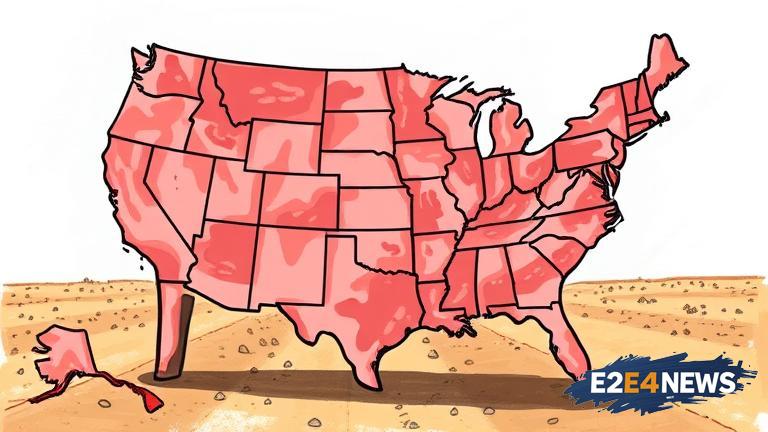The United States is currently facing a significant increase in meat prices, particularly for beef, due to a perfect storm of factors. A severe drought in Washington state has led to a decline in cattle production, resulting in a lower supply of meat. At the same time, demand for meat has remained high, driven by the summer grilling season and the growing popularity of steak and other meat-based dishes. The combination of low supply and high demand has caused meat prices to skyrocket, with some cuts of beef increasing in price by as much as 20%. The drought in Washington state has had a devastating impact on cattle ranching, with many ranchers forced to sell off their herds due to a lack of feed and water. This has resulted in a significant decline in the number of cattle available for slaughter, leading to a shortage of meat. The high demand for meat has also been driven by the growing trend of outdoor cooking and entertaining, with many families and individuals looking to grill and barbecue during the summer months. However, the surge in meat prices has made it difficult for many consumers to afford their favorite cuts of meat. The impact of the drought on cattle ranching has also had a ripple effect on the broader economy, with many businesses that rely on the cattle industry struggling to stay afloat. The US government has implemented measures to support cattle ranchers, including providing emergency funding and resources to help them cope with the drought. Despite these efforts, the meat industry is likely to continue to feel the effects of the drought for some time to come. In addition to the drought, other factors such as inflation and supply chain disruptions have also contributed to the increase in meat prices. The COVID-19 pandemic has also had a lasting impact on the meat industry, with many processing plants and distribution centers experiencing disruptions and delays. The US is not alone in experiencing a surge in meat prices, with many other countries around the world also facing similar challenges. The global meat market is highly interconnected, and disruptions in one region can have a significant impact on the global supply chain. As the summer grilling season continues, it is likely that meat prices will remain high, making it difficult for consumers to afford their favorite cuts of meat. However, there are steps that consumers can take to mitigate the impact of high meat prices, such as buying in bulk and looking for alternative protein sources. The US meat industry is a significant contributor to the country’s economy, with many businesses and jobs relying on the production and distribution of meat. The surge in meat prices has also had a significant impact on the trade balance, with the US importing more meat from other countries to meet demand. The long-term effects of the drought on the US meat industry are still unclear, but it is likely that the industry will take some time to recover. In the meantime, consumers will need to be prepared to pay more for their meat, or look for alternative protein sources. The US government will also need to continue to provide support to cattle ranchers and the broader meat industry, in order to help them cope with the challenges posed by the drought and other factors. Overall, the surge in meat prices is a complex issue with many contributing factors, and it will likely take some time for the industry to recover. The US meat industry is a vital part of the country’s economy and food system, and it is essential that steps are taken to support it during this challenging time.
